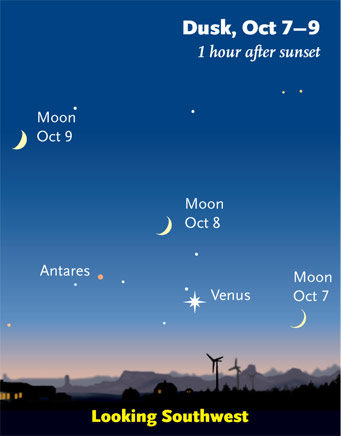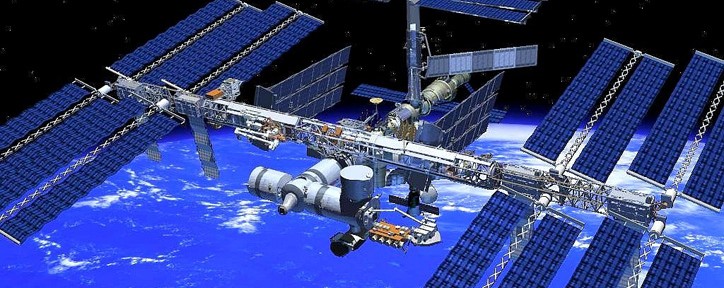See Venus dance with the Moon and Antares, followed by the International Space Station!
From This Week’s Sky at a Glance from Sky and Telescope Magazine:
Monday, October 7: During twilight, the waxing crescent Moon shines to the right of Venus. Well to the Moon’s lower right, while twilight is still fairly bright, binoculars show Saturn above Mercury. [Publisher’s Note: Austin smog will make seeing Saturn and Mercury almost impossible.]
Tuesday, October 8: The Moon shines above Venus in twilight. Depending on where you are in North America, the Moon, Venus, and fainter Antares form a nearly equilateral triangle, as shown at right.
You can also see the International Space Station fly over beginning at 8:13 PM tonight! This is from NASA’s free text alert system called “Spot the Station“:
(SpotTheStation) Time: Mon Oct 07 8:13 PM, Visible: 5 min, Max Height: 72 degrees, Appears: SW, Disappears: NE
Translation: Look to the southwest at exactly 8:13 PM. It will appear low in the sky at first. Austin lights will interfere for a bit but be patient. It will rise silently as it heads in a northeasterly direction until it reaches a maximum elevation of 72 degrees (straight overhead would be 90 degrees). It will be visible for about 5 minutes and when it fades, it will fade fast. This is because it will pass into the shadow of the Earth (sunset for the ISS).
By the way, here is a list of the brightest objects in the sky, in order:
- The Sun
- The Moon
- Venus
- The International Space Station
- Jupiter
Of course, supernovae, comets, meteors, and exploding asteroids can rival the Sun and the Moon but only temporarily.


